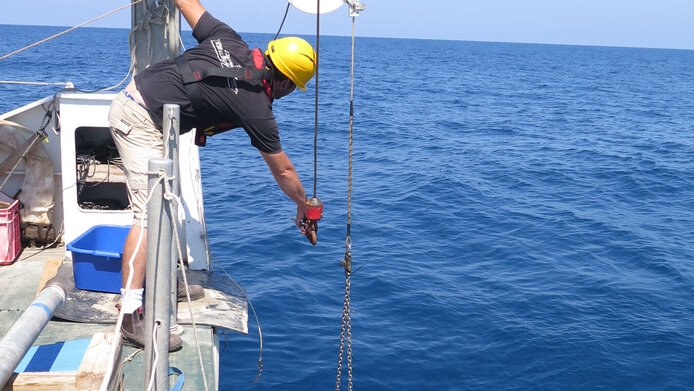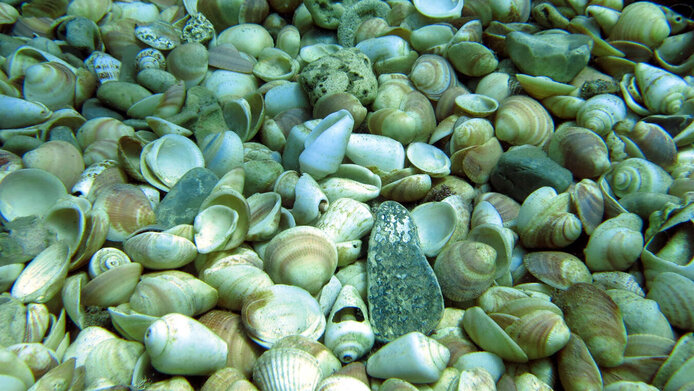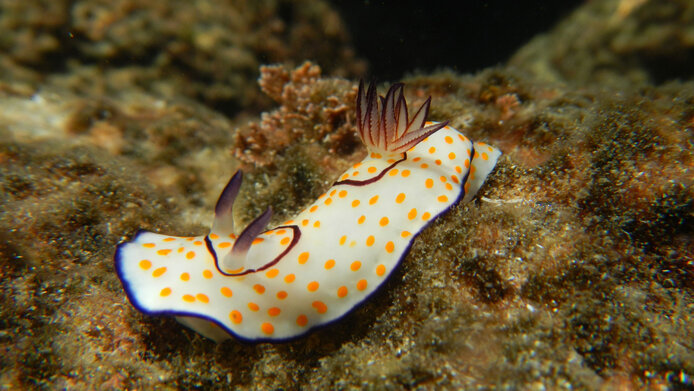Precision research into Mediterranean history

The year 1869 saw the solemn inauguration of the Suez Canal between the Red Sea and the Mediterranean. In those days, no one took an interest in the effects of this major construction feat on marine fauna and flora. From the 1960s onwards, however, biologists noticed that an increasing number of tropical species were migrating into the Mediterranean through the artificial passage or were being introduced with ballast water: “We know when it started, but we know hardly anything about the dynamics of the process, since the historical development of the ecosystem and its species composition were not observed,” says Paolo G. Albano, a marine biologist and the principal investigator of a project funded by the Austrian Science Fund FWF, when describing the starting point of the project. Palaeontological methods were designed to close this one-hundred-year gap in knowledge – specifically by evaluating mollusc shells and their stratification.
The first field trip to the south-eastern Mediterranean did not reveal a gradual development, but a veritable collapse of Mediterranean species. The researchers analysed samples from the sediment, i.e. the seabed, as well as the living organisms above it to obtain an up-to-date picture of biodiversity. Around 80 percent of the molluscs that were still common in the Mediterranean 200 years ago could now only be detected in the sediment. Organisms found to be living above the sediment were almost exclusively tropical immigrants. As Albano notes: “We wanted to gain a better understanding of what triggered the massive decline of Mediterranean species and whether the tropical newcomers were perhaps the drivers of this development.”
Inflow from the tropics
The exchange of organisms between the Mediterranean and the Red Sea is called “Lessepsian migration” after Ferdinand de Lesseps, a French diplomat and the initiator of the canal. The researchers chose the Israeli coast for their research because it is close to the mouth of the canal, easily accessible, and has a local scientific community that was able to provide valuable technical input as well as organisational support. Meanwhile, a follow-up project has been approved by the FWF.
Paolo G. Albano considers “Lessepsian invasion” to be the more appropriate term. Since shells of marine molluscs can survive 100 to 1000 years in the sediment, they can provide information about the historical species composition. The remains are only half a millimetre to a millimetre in size, however, which made the analysis very time-consuming. While each layer provides a historical snapshot of the species spectrum, it is not clear in advance how many centimetres of seabed represent how many decades. The chronological classification is based on the shells of dead organisms using the radiocarbon method. The present biodiversity was surveyed using the living molluscs.
Heat-induced collapse of biodiversity
Examination of the rocky samples (by means of diving) and the sandy samples (by means of a dredger from a ship) yielded the same result, with the soft sediment having a longer memory – several centuries compared to 20 to 50 years for rocks. “The collapse by 80 to 90 percent of the species spectrum within Mediterranean biodiversity is recent and probably occurred within the last two decades. We assume that the heavy losses have to do with the warming of the sea water as a result of human-made climate change,” explains Albano.
In the south-eastern Mediterranean, the water at the sea surface now reaches a temperature of up to 30 degrees and thus the bathtub temperature of tropical seas. The species in the Mediterranean are attuned to a cooler climate and can no longer keep up with the rapid warming. The changed conditions are, however, beneficial for Red Sea species, which can now colonise the Mediterranean even more easily. The greater loss of biodiversity was seen above rocky substrate. The reason for this will be studied in more detail in the follow-up project. At any rate, the insight comes too late for the species native to the south-eastern Mediterranean.
Personal details
Paolo G. Albano conducts multidisciplinary research at the interface of life and earth sciences. He explores marine biodiversity on different spatial and temporal scales with a focus on the root causes of its decline. After seven years at the University of Vienna as a Marie Curie Fellow, he now holds a position as Senior Scientist at the Stazione Zoologica Anton Dohrn in Naples, the Italian Institute for Marine Biology, Ecology and Biotechnology. The project “Historical ecology of Lessepsian migration” (2016–2021) received EUR 444,000 in funding from the Austrian Science Fund FWF.
Publications
Steger J., Bošnjak M., Belmaker J., Galil B. S., Zuschin M., Albano P. G.: Non-indigenous molluscs in the Eastern Mediterranean have distinct traits and cannot replace historic ecosystem functioning, in: Global Biology and Biogeography, Vol. 31, Issue 1, 2021
Albano P. G., Steger J. Bošnjak M., Dunne B., et al.: Native biodiversity collapse in the eastern Mediterranean, in: Proceedings of the Royal Society Biological Sciences, Vol. 288, Issue 1942, 2021







